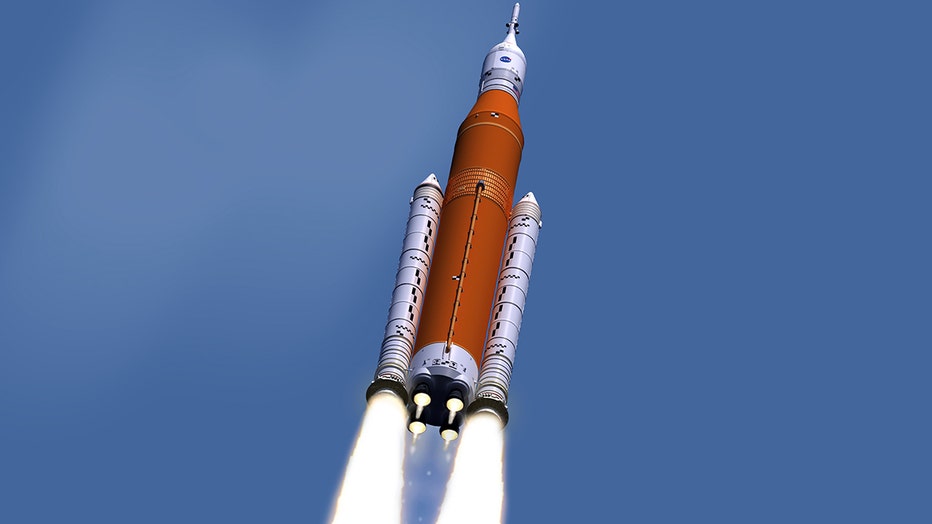NASA, SpaceX hope to end 9-year spaceflight gap with historic mission; launch rescheduled for Saturday
CAPE CANAVERAL, Fla. - Bad weather in the Atlantic has postponed the highly anticipated SpaceX launch from Cape Canaveral.
Two NASA astronauts were set to launch from Kennedy Space Center on Wednesday afternoon, but instead of a NASA rocket or shuttle, they sat in a capsule atop a privately owned and designed rocket for the first time.
Related: Historic SpaceX launch scrubbed due to weather
Veteran space travelers Douglas Hurley and Robert Behnken hoped to end the longest spaceflight gap in U.S. history with a 4:33 p.m. liftoff aboard a SpaceX Falcon 9 rocket, but inclement weather pushed the Demo-2 mission's launch opportunity to the weekend. Their test flight of a SpaceX Dragon capsule will be the first orbital checkout of a new American spacecraft since the debut of the space shuttle over 39 years ago.
WHO ARE THEY?
Hurley, 53, and Behnken, 49, have each flown two shuttle missions and were assigned as two of NASA’s first four commercial crew astronauts in 2015. Hurley is the mission’s commander, while Behnken will hold the new title of joint operations commander.
Both are married to fellow astronauts; Hurley’s spouse is Karen Nyberg, while Behnken is married to Megan McArthur.
RELATED: Who are the astronauts that will embark on the first manned mission into space in nearly 10 years?

Bob Behnken (left) and Doug Hurley (right). NASA photos / Bill Ingalls
BIO FACTS:
Doug Hurley:
- Born in Endicott, New York
- Selected as an astronaut in 2000
- Pilot on STS‐127 & STS‐135, the final shuttle flight
- Fighter pilot & test pilot in the USMC
- He’s traveled 11.8 million miles in space, and logged 683 hours
Bob Behnken:
- Born in in St. Ann, Missouri
- Selected as an astronaut in 2000
- Flown two missions: STS-123 & STS-130
- From 2012-2015, he served as NASA Chief Astronaut
- Logged 708 hours in space and has spent 37 hours spacewalking
WHAT ARE THEY RIDING

A close look at the Crew Dragon capsule, ready for flight atop its Falcon 9 rocket. SpaceX photo.
The Dragon spacecraft being flown on the Demo-2 mission is the upgraded version of SpaceX’s cargo-ferrying capsules, which have made 20 successful automated flights to and from the International Space Station.
Though the capsule-style spacecraft and splashdowns at sea may seem like a throwback to the space race of the 1960s, the Dragon capsules are significantly upgraded over their Cold War counterparts.
Not only are they larger, with seats for up to seven astronauts, they are reusable. Their gleaming white interiors are decked out with LED lighting and flat-screen displays, looking nothing like the dark grey industrial switch-filled panels that lined the walls of NASA’s first capsules.
The Dragon will be hoisted by SpaceX’s Falcon 9 rocket, and while the first-stage booster is also reusable, NASA requested a brand-new booster for this mission. In a nod to history, though, SpaceX was given permission to paint NASA”s red “worm” logo on the rocket, the first use of that logo since 1992.
RELATED: NASA astronauts go back to the future with capsule launch
NEW CAPSULE, NEW SUITS
NASA’s astronauts have sported many different looks through the years. From the sleek silver of the Mercury program to the proper white suits of Apollo and even the bright orange of the shuttle days, the flight suits have always made a statement – a blend of fantasy and function.
But while Hurley and Behnken will walk out of the same Kennedy Space Center doors that every other astronaut has, they’ll look a lot different. SpaceX hired Hollywood designer Jose Fernandez to help give the company’s spacesuits a unique look.
The bright white suits match the shiny white interior of the spacecraft, and they are just as sleek. They’ll provide the same level of protection for the astronauts, but add new features like 3D-printed helmets and touchscreen-friendly gloves.

NASA photo
The one-piece suits are custom made for each astronaut, NASA says. A single connection point on each suit’s thigh attaches life support systems, including air and power connections.
And the suits themselves are not the only thing getting a makeover. The astronauts will no longer be riding to the launch pad in NASA’s silver Astrovan; instead, white Teslas will ferry the astronauts to Launch Pad 39A in a not-very-subtle show of SpaceX corporate synergy.
RELATED: SpaceX's 1st astronaut launch breaking new ground for style

NASA photo
MISSION PLAN
That roll to the launch pad will happen about three hours and 15 minutes before launch. After the astronauts get strapped into their seats and the access arm retracts, supercold fuel will begin to flow into the Falcon 9’s tanks – the first time that any NASA astronauts will be aboard a rocket as it is fueled.
The 4:33 p.m. liftoff window on Wednesday was instantaneous, meaning there was not a chance to regroup from any last-minute technical problems and try again later.
RELATED: SpaceX likely to win out-of-this-world ‘capture the flag’ race
NEXT STEPS
If the Demo-2 flight goes well, the next SpaceX crew could fly as soon as August, NASA says. But they aren’t the only company developing space taxis; Boeing’s Starliner capsule flew an uncrewed test flight last year that experienced several issues and never made it to the space station.
Boeing plans to refly that test mission before putting astronauts aboard, perhaps later this year.
NASA, meanwhile, will be free to focus on longer-term deep-space missions. The Orion capsule, which flew an uncrewed test mission in 2014, will carry astronauts back to the moon as part of the Artemis program.

NASA artist's rendition of the Orion capsule atop an SLS rocket.
The agency is developing a large rocket using the space shuttle’s engines and upgraded boosters to launch the elements of a lunar outpost. The first launch could happen in 2021, with a moon landing in 2024.

